The City of Royal Oak is in the process of developing a new Master Plan.
The City of Royal Oak is in the midst of a process to write a new master plan. Many portions of the present master plan are over 20 years old and conditions within the city and more broadly have changed sufficiently that the city has decided a new plan is warranted. The first draft of the Master Plan has been submitted for Planning Commission Review.
What is a Master Plan?
A Master Plan is the main guiding policy document for private development and public projects within the city. It looks ahead 20 years and considers where and how the city should grow, considers changes that may need to be made in order to support future resident needs, and evaluates recent best practices in land use and transportation for potential application within the city. State law requires periodic review and updates to municipal Master Plans to align with current conditions and anticipated future changes.
The Master Plan DOES:
- DOES ESTABLISH a long-term, aspirational vision for the city’s future, and
- DOES PROVIDE steps for realizing that vision.
- DOES INFORM future rule making and development decisions.
- DOES RECOMMEND new policies and changes to existing rules for future consideration.
- DOES GUIDE future zoning changes, which must, by law, include an open public process, subject to public hearings and discussion.
The Master Plan DOES NOT:
- DOES NOT change existing zoning / rezone.
- DOES NOT propose new buildings, other than public buildings.
- DOES NOT result in immediate changes to laws or policies.
- DOES NOT result in immediate physical changes within the city.
- DOES NOT preclude further public input on any issues recommended within the master plan.
The Master Plan PROCESS:
- INCLUDES further public input and review through upcoming surveys, website input, detailed Planning Commission review of draft materials, and City Commission review once approved by the Planning Commission.
- HAS NOT produced a first draft of the master plan; present input opportunities are before the first draft is written. Multiple drafts will be reviewed by the Planning Commission and public before being sent to the City Commission for consideration.
The Master Plan Direction document is NOT a draft of the master plan, rather it PROPOSES the following to be included in a future first draft:
- RETAINING the existing zoning and existing character of the city’s single family neighborhoods. Recommended rule changes in these areas are to protect existing housing character.
- ALLOWING additional housing along major roads, including small-scale multi-family, duplexes, and townhomes. Rule changes are recommended along with this to reduce impacts on adjacent properties including larger rear setbacks and screening.
- REVISING rules and development review processes so that expectations for new development are clear to the public and developers, and that development be held to those rules.
- CONSIDERING rules for allowing accessory dwelling units that would be compatible with neighborhood character and privacy concerns.
- ENCOURAGING redevelopment of vacant and underutilized commercial properties along major roads with mixed-use, residential, or new neighborhood-serving commercial uses.
- REDUCING parking demand and cut-through traffic along Woodward and improving pedestrian, bicycle, and driver safety, along with additional rules to increase rear setbacks and provide screening from adjacent properties.
- RIGHT-SIZING some major roads to support existing and future traffic in order to provide space for on-street parking, street trees, wider sidewalks, or bicycle accommodations. Recommended changes are in compliance with the International Fire Code and follow traffic engineering best practices for the safety of drivers, pedestrians, and bicyclists.
- INCREASING pedestrian and bicycle safety at major roads with new, safe crossings, and providing safe routes around the city along neighborhood streets instead of major roads.
- CHANGING the Delemere industrial area from primarily industry and manufacturing to primarily mixed-use and residential, which has already occurred in many of the city’s former industrial areas.
- IMPROVING the vibrancy of downtown by changing rules for the ground floor of buildings, encouraging development on surface parking lots, increasing downtown housings, and reimagining the train station area.
- PROMOTING more attainably priced housing, including housing for seniors, by allowing multi-family housing in additional, limited areas, changing development rules to require more specific design outcomes in exchange for a faster approval process, and allocating state-level funds for exemplary development proposals.
- COORDINATING with surrounding communities and within the city to reduce flooding, a problem that is larger than Royal Oak alone.
Master Plan Objectives
The Master Plan team’s goal is to create a document that synthesizes community vision, recent and upcoming development efforts, best practices, and emerging trends to provide a framework for future growth that sustains local character and bolsters resilience.
We intend that the Master Plan will enable the built environment to support a thriving Royal Oak community for generations into the future.
Specific issues addressed by this Master Plan, pertinent to Royal Oak in the present and near future and affecting land use policy include (but are not limited to):
- preservation and redevelopment in established neighborhoods
- the reality of market demand for new housing, commercial and industrial development
- obsolete or below market condition sites, buildings, & tenant spaces
- a thriving post-endemic downtown, neighborhood business corridors, and Woodward corridor
- relationship between the public realm and private property
- planning for future trends in mobility
- preservation and enhancement of green space and green features in the built environment
- resilience and environmental outcomes
This list of issues will be validated and modified as necessary.
Stages of Master Plan Process
Master Plans serve multiple purposes, from governing how land should be used in the future to prioritizing municipal capital investments over a decade or more. In Michigan, Master Plans (also called Comprehensive Plans) are the legal basis for zoning and are encouraged to be reviewed or updated every five years by the state. The city has reviewed its Master Plan every five years since 1999. Significant amendments occurred in 2012.
There are a number of required steps a Michigan municipality must take before, during, and after its Master Plan preparation. The process for preparing the new Royal Oak Master Plan is as follows:
STAGE 1: ENGAGE THE PUBLIC AND VARIOUS STAKEHOLDERS.
Starting in early 2023 Effective and responsive community planning efforts must meaningfully engage affected stakeholders. For this plan, the stakeholder group is broad, including all residents and property owners. The information gathered during public engagement is used to prepare consensus plans, set the course for how the community will change, and to guide vision statements and priorities for municipal investments for future generations. Public engagement through the Master Plan process will include community online and hard copy surveys, submittal of online text comments, interactive online mapping portal for graphic-based comment submission, round-table discussions with business and commercial property owners & institutional organizations, local neighborhood meetings for resident participation, a charrette engaging the community in the process of design and policy creation, public review of drafts, and public hearings prior to plan adoption.
STAGE 2: STUDY CURRENT PHYSICAL, SOCIAL, ECONOMIC, AND RELATED CHARACTERISTICS.
January – April 2023 Master Plans must have a foundational understanding of the characteristics of their subject community, from neighborhood physical characteristics to demographic trends likely to be realized in the following years. This study and analysis of the essential characteristics of Royal Oak is an important process element and allows the planning and design team to appropriately craft plans and recommendations for locally-appropriate future development, whether public or private.
STAGE 3: CRAFT AREA-SPECIFIC PLANS AND DESIGNS.
May 2023 With a focus on implementation, the Master Plan will contain plans and designs covering the entire city, including proposals for specific neighborhoods, corridors and nodes. Preservation and redevelopment in established neighborhoods is important to the future of Royal Oak to support current and future residents. The Eleven Mile business districts and Woodward Avenue commercial areas are examples of significant corridors, and downtown Royal Oak is an example of an activity ‘node’ which will be further explored. To function as a tool for future zoning decisions and regulations, the Master Plan will include a “Future Land Use Map”, which guides how individual parcels may be used over time.
CURRENT STAGE: STAGE 4: REGULAR FEEDBACK BY ELECTED AND APPOINTED OFFICIALS.
2023 – 2024 Royal Oak leaders are charged with giving careful consideration to alternative concepts, creative ideas, and potential problems to be solved during the master planning preparation effort. Thus, to receive ongoing feedback, the project team will attend Planning Commission meetings throughout the process and engage the Planning Commission, the City Commission, and city administration in the creation and review of Master Plan Recommendations and Master Plan Drafts.
STAGE 5: ADOPTION PER MICHIGAN STATUTE GOVERNING MASTER PLANS.
2024 – 2025 The Michigan Planning Enabling Act provides requirements for the adoption of Master Plans by municipalities, which includes review by neighboring jurisdictions and regional planning agencies, public comment period, and a public hearing on the draft plan. Once the required steps have been taken, the community is then able to adopt the Master Plan and get to work on implementation.
Many popular web browsers contain built-in accessibility tools or allow additional plug-ins with useful accessibility tools and resources. However, if you still require assistive technology, such as a Braille reader or screen reader, and the format of any material on this website interferes with your ability to access information, please contact us. To enable us to respond to a manner most helpful to you, please indicate the nature of your accessibility concern, the preferred format in which you receive the material, and your contact information.
All rights reserved regarding all website content.




